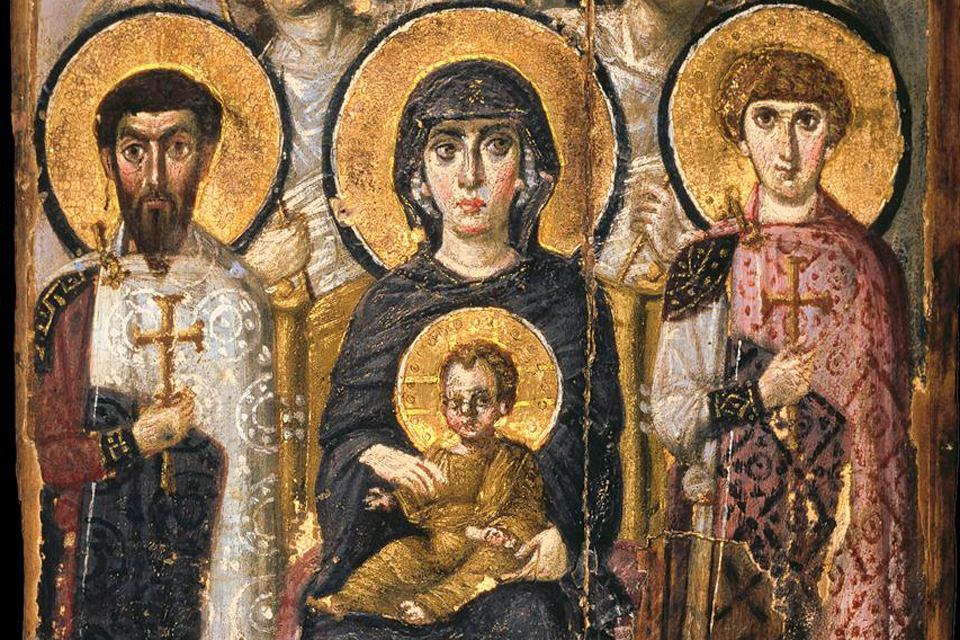What were the consequences of the Justinian Plague in the 6th century? How did people react to the pain and suffering, which by all accounts were just as devastating as those in the 14th century?
The “Justinianic Plague”: the economic consequences of the pandemic in the eastern Roman Empire and its cultural and religious effects.
By Mischa Meier
In Early Medieval Europe (2016) Volume 24, Issue 3, Pages 267–292
ABSTRACT:
These are complicated questions to answer in view of the dearth of sources available to us. The more grateful should we be to Mischa Meier who has argued that this crisis had profound religious and cultural consequences and indeed help to foster the cultural transition from the Roman Empire to the Middle Ages.
Meier is not new to this complex field of research. Already in 2003 he published an impressive monograph detailing the history of the reign of Justinian (527 -565). In this work he explored the linkage between a history of politics and mentality. This period was – as is well-known – marked by a series of environmental catastrophes culminating in the volcanic eruptions in AD 536 – 540, the dust veil and the following outbreak of pandemic plague. All this constituted “a perfect storm” which resulted in a widespread apocalyptic cultural climate characterised by several liturgical and religious reorientations.
In this article, recently published in Early Medieval Europe, he has revisited this field of enquiry, especially focusing on the consequences of the plague.
In the first part he takes a quick tour of the arguments for and against the size and impact of the devastation caused by the Justinian Plague, concurring with the present general opinion, which – due to new archaeological research – is convinced that the plague seemingly played out in the same way as did the Black Death in the 14th century. Both were caused by the same coccobacillus, Yersinia Pestis, and both seem to have spread from Mongolia across the Steppes via Byzantium and Egypt to both cities and countrysides as far away as Ireland, inner Bavaria and in all likelihood also the region around the Gulf of Bothnia. Much new evidence is sure to crop up in the future, as new aDNA assays are likely to be introduced. However, the jury is hardly out on this anymore.
One of the places where we are better informed about the devastation of the 6th century plague is of course Byzantium, where not only chronicles presents us with horrifying details, but where we also learn how this caused a financial crisis of magnitude during the reign of Justinian: Food shortages, famines, devaluation of the solidi, the gold coins, and in all likelihood the lack of funds to pay the army are just some of these elements.
Religion and Culture
However, the real changes in this period were not economic or fiscal, but rather religious and cultural.
From the article we learn that the general despair created a vacuum in trust. People must have felt the need for new sponsors in heaven, and Meier links it to some incidences of repaganization, although perhaps more specifically the fear of this phenomena among the commentators and chroniclers of that time. Christianity was suffering in these times of massive insecurity. He writes how “The entire religious system threatened to come away from the moorings” (p. 284). The desperate situation defied any attempts at explanation and obviously called for desperate measures.
It is in view of this we must consider the very rapid growth of the Cult of Mary, a sign of which was the transferral of Candlemas from the 14th to the 2nd February turning a festival of Christ (the presentation in the Temple) into a Marian Festival, the purification. Sources directly refer to the “new” festival as a measure to alleviate the plague, writes Maier.
Another sign of this shift was the parallel development of iconolatry, the veneration of icons, with specific icons soon gathering special powers and fame.
Finally, Meier notes the reconstruction of the image of the emperor, who spinned himself into a pious saint, a “sacral exaggeration” (p. 287), which his successors initially maintained. This is especially apparent if one compares – as Meier has done – two adventi performed by Justinian. In 534, he organised a festival celebrating the victory over the Vandals in the same manner as an ancient Roman triumphal procession. 25 years later, in 559, he mounted a different and deeply religious ceremony. This was part of the new liturgification, a process which continued into the next century, which may even be quantified: Not presented here, but obviously part of the argument, it has been possible to calculate the concrete rise in the numbers of processions, miraculous icons, Marian festivals etc.
READ ALSO:
Das andere Zeitalter Justinians. Kontingenzerfahrung und Kontingenzbewältigung im 6. Jahrhundert n. Chr.
By Mischa Meier
Series: Hypomnemata Vol. 147
Göttingen, Vandenhoeck und Ruprecht 2004
READ MORE:
FEATURED PHOTO:
Theotokos from the 6th century. St. Catherine’s Monastery in Sinai. Source: Wikipedia
